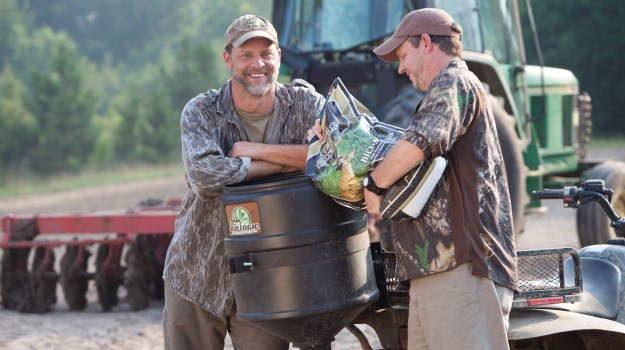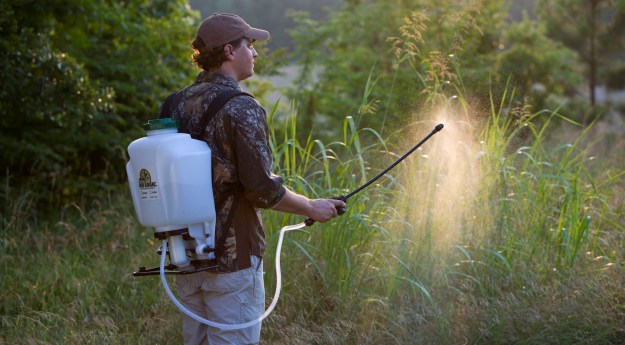
Growing food plots isn’t easy—it takes work and dedication—and along the way mistakes are often made. According to Mossy Oak food plot expert Todd Amenrud, two common mistakes include over broadcasting seed and covering that seed too deep.
“Even food plot veterans will make the mistake of distributing too much seed,” Amenrud noted. “The reason for this is that those planting food plots are looking at dark colored soil that has just been turned. Plus, they have a dark background and dark seeds in the hopper. Honestly this makes seeing seeds, both those flying from the hopper and those on the ground, very difficult. So, planters naturally want to broadcast a little more. By doing this you are actually thwarting your food plots full potential. The plants will become crowded and won’t produce nearly as well. You need to remember that we have biologists that have been working on these recipes and ratios for a very long time. Just trust the recommendations they have put on the packaging.
“The one instance where I would recommend putting the seed on a bit thicker is when you have old seed and you test that seed ahead of time. To do this, take 10 or 20 seeds and place those on a paper towel that has been folded about four times and soaked in water. Then place the seeds and paper towel in a Ziploc bag and place the bag on a warm windowsill. After a week or so you will be able to note your germination rate. If your germination rate is 7 out of 10, then you will want to apply 30 percent more seed. This, however, is the only instance in which I would recommend putting seed on a little heavier than recommended.
“Lastly, don’t bury the seed too deep. You don’t have to go back over tiny seeds like chicory and clover brassica and disk it in 2-inches deep. Just remember to understand and follow the planting guidelines for the seed you are planting before you get going.”
The Mossy Oak GameKeepers share the belief that being outdoors is about loving the land, its wildlife, and giving back more than you take. For more articles and information about managing land for wildlife, please visit farmingforwildlife.com.






























